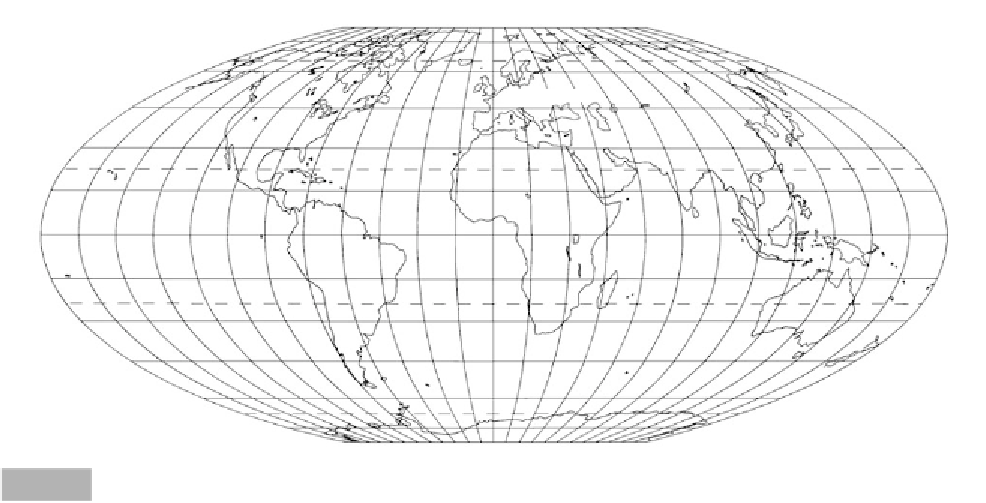Geoscience Reference
In-Depth Information
Mt. Spurr
Redoubt
Augustine
Laki
Iceland
Kodiak Is
Vatnajökull
Surtsey
Katmai
Mt. Hekla
Vancouver
English Channel
France
Mt Rainier
Usu
Mt St Helens
Bandai
Santorini
Columbia River Plateau
Vesuvius
Mt. Etna
San Francisco
Mt. Stromboli
Mauna Loa
Hilo
Mt. Pinatubo
La Soufrière
Parícutín
Kilauea
El Chichon
Santa Maria
Mt. Pelée
Kolkata
Aden
Soufrière
Dieng Plateau
Kelat
Seychelles
Islands
Nevado del Ruiz
Krakatau
Galunggung
Mt. Agung
Tambora
Rift Valley
Elsey Cr.
Mauritius
Rodriguez Is.
Northwest Cape
Port Elizabeth
Lake Taupo
Mt. Ruapehu
Mt. Erebus
Location map.
Fig. 11.1
all major placenames mentioned in this chapter and
not located on individual site maps). By calculating the
amount of energy partitioned among these various
processes, it is possible to classify the type of volcano
and its magnitude. This is of little help in predicting
volcanic events, but it can give information on the type
of eruption that has occurred. For instance, eruptive
volcanoes expend considerable energy in easily
measured atmospheric shock waves and tsunami.
Knowledge of these values can be used to evaluate the
overall energy of the volcano. In addition, the contin-
ual monitoring of energy expenditure, and the way it is
partitioned, can be used to predict whether a volcano
is dying down or increasing in activity.
permit safe evacuation. In the geological past, some
volcanoes have had enormous magma chambers that
emptied and flooded landscapes over vast distances in
a short period. Some flood lavas have laid down
deposits 500 m thick over distances of 300 km. The
largest such deposits on Earth (flood lavas also occur
on other planets and their moons) make up the Deccan
Plateau in India, the island of Iceland, the Great Rift
Valley of Africa, and the Columbia River Plateau in
the United States. 'Hawaiian'-type eruptions are very
similar to flood lavas. However, at times, they can
produce tephra and faster moving, thin lava flows.
Hawaiian eruptions tend to be aperiodic, building up
successive deposits over time. These can form large
cones that, in the case of the Hawaiian Islands, can be
tens of kilometres high and hundreds of kilometres
wide at their base.
Explosive eruptions can be more complex. The
simplest form begins with the tossing out of moderate
amounts of molten debris. 'Strombolian' volcanoes,
named after Mt Stromboli in Italy, throw up fluid lava
material of all sizes. Most eruptions of this type toss out
bombs a few hundreds of metres into the air, rhythmi-
cally, every few seconds in events that can go on for
years. They can also produce moderate lava flows.
Strombolian volcanoes are characterized by a very
symmetrical cinder cone that grows in elevation
around the vent. Strombolian volcanoes also represent
an intermediate stage between basaltic and acidic
magma extrusions. 'Vulcanian'-type eruptions are more
TYPES OF VOLCANIC
ERUPTIONS
(Fielder & Wilson, 1975; Blong, 1984; Wood, 1986)
While most classification schemes refer to a specific
historical event characterizing an eruption sequence, it
should be realized that each volcanic eruption is
unique, and may over time take on the characteristics
of more than one type. There are two types of non-
explosive volcanoes. Volcanoes producing
flood lavas
are the least hazardous of all eruptions, because they
occur very slowly, permitting plenty of time for evacu-
ation. Flood lavas are basaltic in composition. At
present, such eruptions are rare, occurring only in
Iceland, where they happen with sufficient warning to


























































